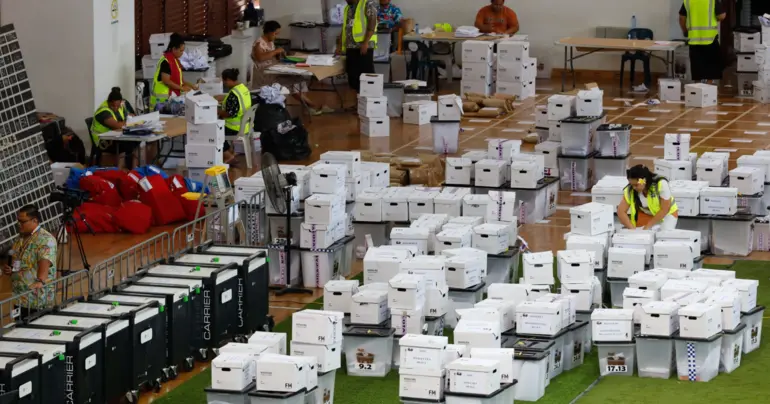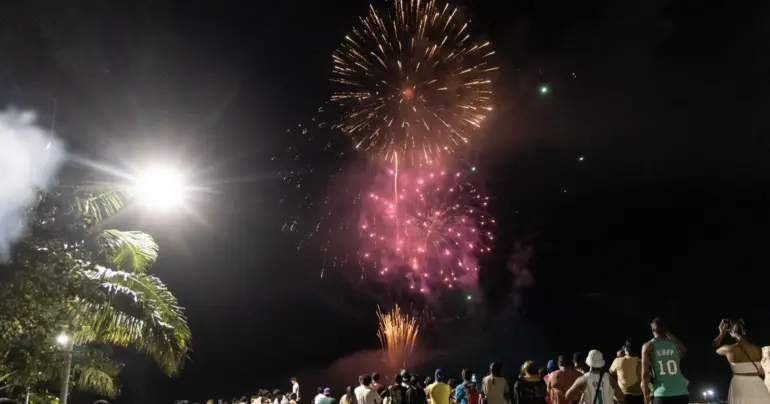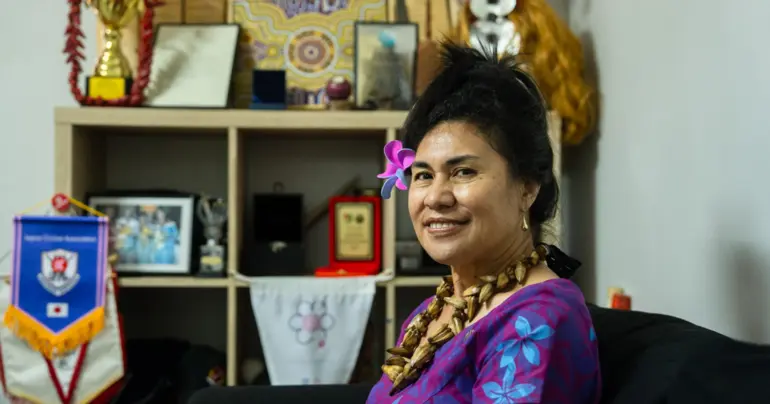Pacific's plastic problem 20 times the global average
 By Sapeer Mayron
•
09 September 2019, 12:00PM
By Sapeer Mayron
•
09 September 2019, 12:00PM
The Pacific Islands may be generating 20 times the global average of the plastic waste that ends up in our oceans, new research has found.
A report released by Japanese experts last month reveals mismanagement of plastic waste from the region accounts for 2.7 of the 12.12 million tonnes of plastic filling the oceans every year.
It found 64 per cent of plastics are making their way to landfill and 24 per cent are being reused at least once, but 12 per cent of plastics are burned, used outdoors in some way or dumped in a backyard landfill.
“Of the inadequately managed amount, about 715 tonnes per year could potentially end up in the ocean,” the report states.
This is despite the fact that the region represents just 0.14 per cent of the global population.
“This means that the per capita generation of ocean-bound plastic waste in the [Pacific Island Countries] could be almost 20 times the global rate,” the report states.
“These results suggest that the [Pacific Island Countries] as a group, as well as some of the individual countries (e.g. Papua New Guinea, the Solomon Islands, and the Federated States of Micronesia), are important sources of ocean plastic waste, even though the scale of each country is not large.”
This is largely due to little to no collection, recycling or export systems widely available in the Pacific, and poor waste collection rates in rural areas.
The research was funded by the Environment Research and Technology Development Fund from the Ministry of the Environment, Japan.
They compared average amounts of municipal solid waste collected in Pacific Island countries (P.I.Cs) with countries in Asian developing countries and found, despite their less developed economic status, Pacific Islands were generating more waste than their Asian neighbours.
The region’s countries generate an average of 1.2 kilograms of waste per person per day, much larger than the 0.73 kg average in India, the Philippines, Indonesia and Vietnam.
“Generally, the greater the economic development and rate of urbanisation, the greater the amount of solid waste produced,” the report states.
“However, the results for the P.I.Cs seem high as compared with those in Asian developing countries.”
They suggest this may be due to tourism, or increased imports in the Pacific.
Locally, Samoans use 34.5 kilograms of plastic per person per year. Some 12 per cent of it is estimated to not be disposed of properly and a lot is ending up in the ocean.
The report states Samoa gets through 6,830 tonnes of plastic products per year.
And what’s more, four per cent of the plastics used in Samoa are littered, meaning they are not managed at all. That is twice the global rate of litter to plastic use.
Regionally, mismanaged plastic waste weighs 327,000 tonnes per year (assuming all uncollected plastic waste is mismanaged). Papua New Guinea alone accounts for 254,000 tonnes.
The countries included in the study are the 19 Pacific S.P.R.E.P member countries (Secretariat of the Pacific Regional Environment Program).
“A comparison of these values with the potential amount of ocean plastic waste generated from the top 20 global plastic waste generators revealed that the amount from the P.I.Cs was much smaller than that from China (the largest ocean plastic waste producer) but higher than those of Morocco (ranked 18th), North Korea (ranked 19th), and the United States (ranked 20th).”
The report suggests several solutions to this problem, which should be used in conjunction with each other.
Most important is addressing waste collection in rural areas, the authors suggest, which means fixing inadequate access for the collection truck, and insufficient human resources.
Reducing plastic consumption is also important, and a move many Pacific Islands have already made.
Samoa, Vanuatu, American Samoa, Northern Mariana Islands, Micronesia and Marshall Islands have banned the plastic shopping bag.
“Another plastic packaging material that could be targeted is single-use plastic containers for takeaway meals and individual packaging of instant noodles, because these items are quite common in islanders’ modern lives,” the report suggests.
But for the plastic sources that cannot be removed or reduced, collection and recycling has to be improved.
Kiribati, Palau and Micronesia have implemented container deposit and refund systems, and S.P.R.E.P’s regional strategy aims to do the same in three more countries by 2020 and another three by 2025.
The Japanese Technical Cooperation Project for Promotion of Regional Initiative on Solid Waste Management in Pacific Island Countries (J-PRISM II) has introduced ‘return’ into the reduce, reuse and recycle mantra, to encourage export of recyclable resources, and materials that cannot be treated on the island.
“The integration of several policies on the basis of appropriate analyses and policy comparisons is necessary,” the report cautions.
“Education, environmental taxes, and extended producer responsibility policies must be considered along with other waste management and environmental issues.”
The report is titled 'Analysis of mismanaged plastic waste in Samoa to suggest proper waste management in Pacific island countries'. It was prepared by researchers from Japan and the Japanese International Cooperation Agency (J.I.C.A).
Tags
 By Sapeer Mayron
•
09 September 2019, 12:00PM
By Sapeer Mayron
•
09 September 2019, 12:00PM











